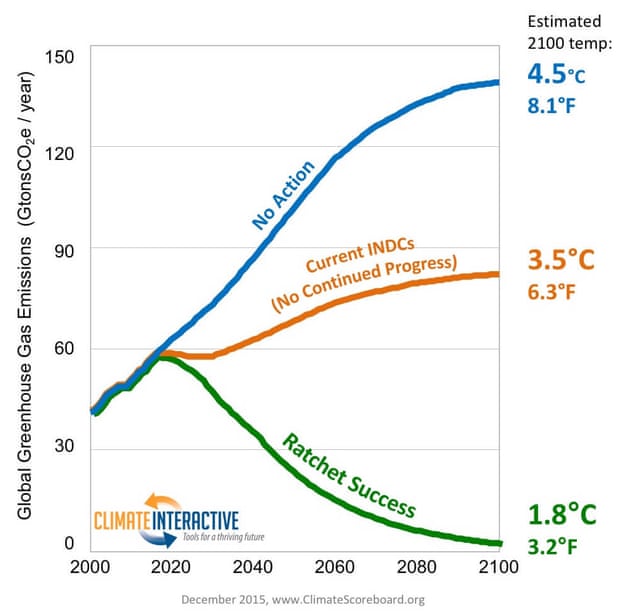
In the Paris climate treaty, nearly every world country agreed to try and limit global warming to no more than 2°C above pre-industrial temperatures, and preferably closer to 1.5°C. But a new study published in Nature Climate Change notes that the agreement didn’t define when “pre-industrial” begins.
Our instrumental measurements of the Earth’s average surface temperature begin in the late-1800s, but the Industrial Revolution began in the mid-1700s. There’s also a theory that human agriculture has been influencing the global climate for thousands of years, but the mass burning of fossil fuels kicked the human influence into high gear.
We know that since the late-1800s, humans have caused global surface temperatures to rise by about 1°C. But what about the human influence in the centuries before that, which are technically still “pre-industrial”? The new study used climate model simulations from 1401 to 1800, during which time we know the climate influences of natural effects like solar and volcanic activity fairly well. They found that depending on the starting point, global surface temperatures during that period were 0 to 0.2°C cooler than the late-1800s.
According to the last IPCC report, to have a 50% chance of staying below the 2°C target, when accounting for non-carbon greenhouse gases, we have a remaining budget of about 300bn tons of carbon dioxide. But that was for 2°C warming above late-1800 temperatures. If we add another 0.1°C of pre-industrial warming, the study authors estimated that the budget shrinks by 60bn tons (20%), and if there was an additional 0.2°C pre-industrial warming, the 2°C carbon budget shrinks by 40%. As one of the study authors Michael Mann put it:
Either the Paris targets have to be revised, or alternatively, we decide that the existing targets really were meant to describe only the warming since the late 19th century.
It’s an important point if we want to measure whether we’ve succeeded or failed in meeting the Paris climate targets. And it’s important to know if our budget should be set at no more than 300bn tons, or more like 200bn tons of carbon dioxide pollution.
However, we’re not yet on track to meet the Paris climate target budget. Based on current national pledges, humans will cause around 3 to 3.5°C warming above late-1800 temperatures by 2100. However, the Paris treaty included a ratcheting mechanism through which countries can gradually make their carbon pollution targets more aggressive. If successful, that ratcheting could limit global warming to 1.8°C above late-1800 temperatures, which is likely less than 2°C above pre-industrial temperatures.

Global greenhouse gas emissions and 2100 temperatures under no action, current pledges (INDCs), and successful ratcheting scenarios. Illustration: Climate Interactive
To accomplish that goal, the US would have to ratchet its carbon pollution down to 45% below 2005 levels by 2030, for example. But at the moment, America is moving in the wrong direction, shamefully becoming the only nation announcing withdrawal from the Paris treaty, aiming to join Nicaragua (which declined to sign due to objections that the agreement was too weak) and Syria (which did not participate due to a civil war) as the only non-signatory countries. Fortunately, other countries like China and the EU are stepping up to fill the global leadership role vacated by America under the Trump administration.
It’s also important to remember that 2°C isn’t a red line – that if we cause 2.1°C the world will end or that at 1.9°C everything will be fine and dandy. The 2°C target is a reasonable one for two reasons:
Posted by dana1981 on Monday, 24 July, 2017
 |
The Skeptical Science website by Skeptical Science is licensed under a Creative Commons Attribution 3.0 Unported License. |